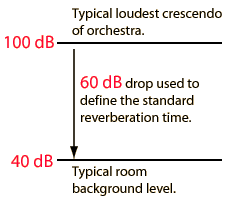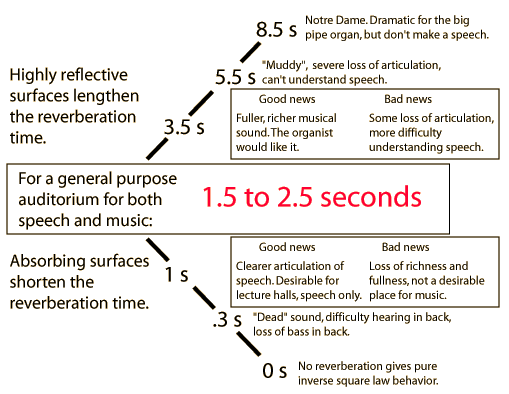Reverberation Time
The reverberant sound in an auditorium dies away with time as the sound energy is absorbed by multiple interactions with the surfaces of the room. In a more reflective room, it will take longer for the sound to die away and the room is said to be 'live'. In a very absorbent room, the sound will die away quickly and the room will be described as acoustically 'dead'. But the time for reverberation to completely die away will depend upon how loud the sound was to begin with, and will also depend upon the acuity of the hearing of the observer. In order to provide a reproducible parameter, a standard reverberation time has been defined as the time for the sound to die away to a level 60 decibels below its original level. The reverberation time can be modeled to permit an approximate calculation. .

| Why 60 dB? | What is a desirable reverberation time? | Calculation |
Auditorium acoustics
| HyperPhysics***** Sound | R Nave |


